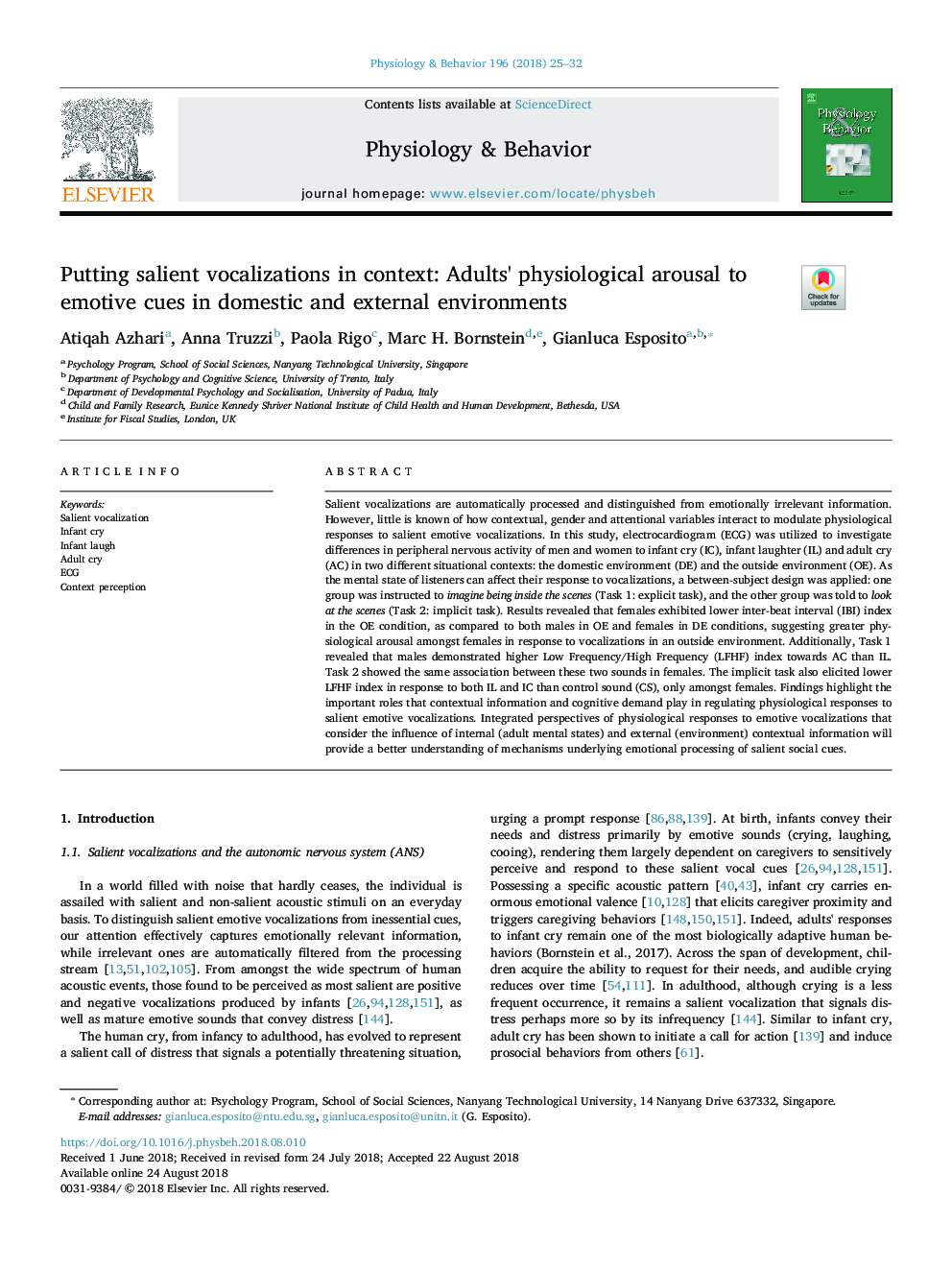| Article ID | Journal | Published Year | Pages | File Type |
|---|---|---|---|---|
| 8956934 | Physiology & Behavior | 2018 | 8 Pages |
Abstract
Salient vocalizations are automatically processed and distinguished from emotionally irrelevant information. However, little is known of how contextual, gender and attentional variables interact to modulate physiological responses to salient emotive vocalizations. In this study, electrocardiogram (ECG) was utilized to investigate differences in peripheral nervous activity of men and women to infant cry (IC), infant laughter (IL) and adult cry (AC) in two different situational contexts: the domestic environment (DE) and the outside environment (OE). As the mental state of listeners can affect their response to vocalizations, a between-subject design was applied: one group was instructed to imagine being inside the scenes (Task 1: explicit task), and the other group was told to look at the scenes (Task 2: implicit task). Results revealed that females exhibited lower inter-beat interval (IBI) index in the OE condition, as compared to both males in OE and females in DE conditions, suggesting greater physiological arousal amongst females in response to vocalizations in an outside environment. Additionally, Task 1 revealed that males demonstrated higher Low Frequency/High Frequency (LFHF) index towards AC than IL. Task 2 showed the same association between these two sounds in females. The implicit task also elicited lower LFHF index in response to both IL and IC than control sound (CS), only amongst females. Findings highlight the important roles that contextual information and cognitive demand play in regulating physiological responses to salient emotive vocalizations. Integrated perspectives of physiological responses to emotive vocalizations that consider the influence of internal (adult mental states) and external (environment) contextual information will provide a better understanding of mechanisms underlying emotional processing of salient social cues.
Keywords
Related Topics
Life Sciences
Biochemistry, Genetics and Molecular Biology
Physiology
Authors
Atiqah Azhari, Anna Truzzi, Paola Rigo, Marc H. Bornstein, Gianluca Esposito,
